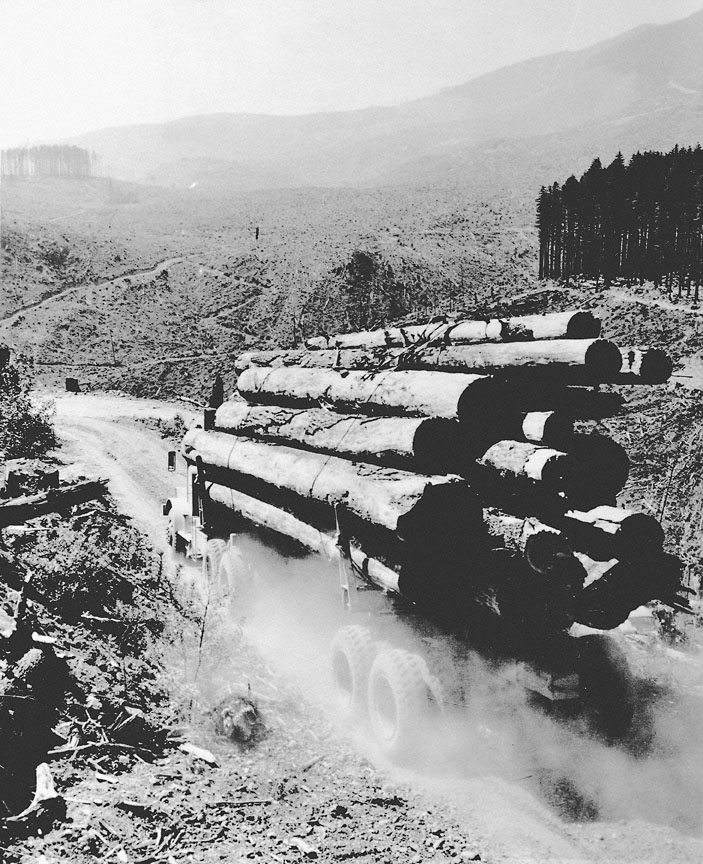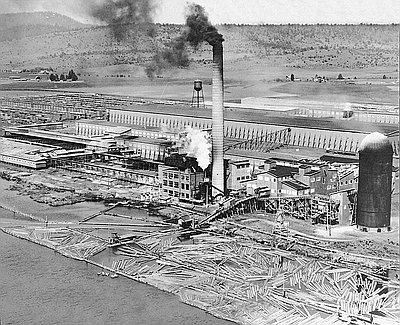- Catalog No. —
- CN 017408
- Date —
- n.d.
- Era —
- None
- Themes —
- Environment and Natural Resources
- Credits —
- Oregon Historical Society
- Regions —
- None
- Author —
- The Timberman
Log Truck Stirs Dust through Clearcut
This undated photograph from the Timberman is identified as being from the Pacific Northwest. Although the title accompanying the photograph in the collection identifies the surrounding logging operation as the work of the Weyerhaeuser Company, it is representative of the extensive clearcutting associated with industrial logging across the Pacific Northwest during the second half of the twentieth century.
The advent of the gasoline-powered combustion engine in the late nineteenth century and its subsequent use in automobiles, was a boon to small-scale logging outfits that lacked the capital to invest into expensive railroad equipment. The first logging trucks of the twentieth century were run on plank roads, made from rough-hewn lumber. They were “hard-tired,” outfitted with narrow, solid rubber—sometimes steel—treadless tires that made travel on frost-covered or wet roads treacherous. Although trucks were slowly adopted by logging companies at first, a surplus of military trucks made available after World War I, increased their use in the woods.
During the 1920s and 1930s, significant advances in truck power and design increased the popularity and usefulness of trucks in logging operations. Increases in engine horsepower allowed for the transport of larger hauls. Better braking systems made trucks safer. The introduction of wider, inflated, pneumatic tires with treads allowed for increases in truck speed and load weights and allowed logging companies to substitute graded dirt roads for the older plank style. By the mid-1930s, trucks were finally hauling about as many trees out of the woods of the Pacific Northwest as were railroads.
During World War II, improvements in truck design continued, and when the war ended a second glut of military surplus vehicles provided logging companies with larger, more powerful trucks. At the same time, surplus earth-movers like bull dozers and dump trucks provided companies with the equipment needed to carve logging roads deeper into the woods. After World War II, the ever-increasing consumption of wood products in the United States and around the world provided lumber companies with the incentive to maximize their harvests. For the remainder of the twentieth century, clearcut logging became the favored strategy employed by lumber companies in the Northwest.
Further Reading:
Wentz, Walt. Bringing Out the Big Ones: Log Trucking in Oregon, 1912–1983. Salem, Oreg., 1983.
Bunting, Robert. The Pacific Raincoast: Environment and Culture in an American Eden, 1778–1900. Lawrence, Kan., 1997.
Written by Joshua Binus, © Oregon Historical Society, 2004.

